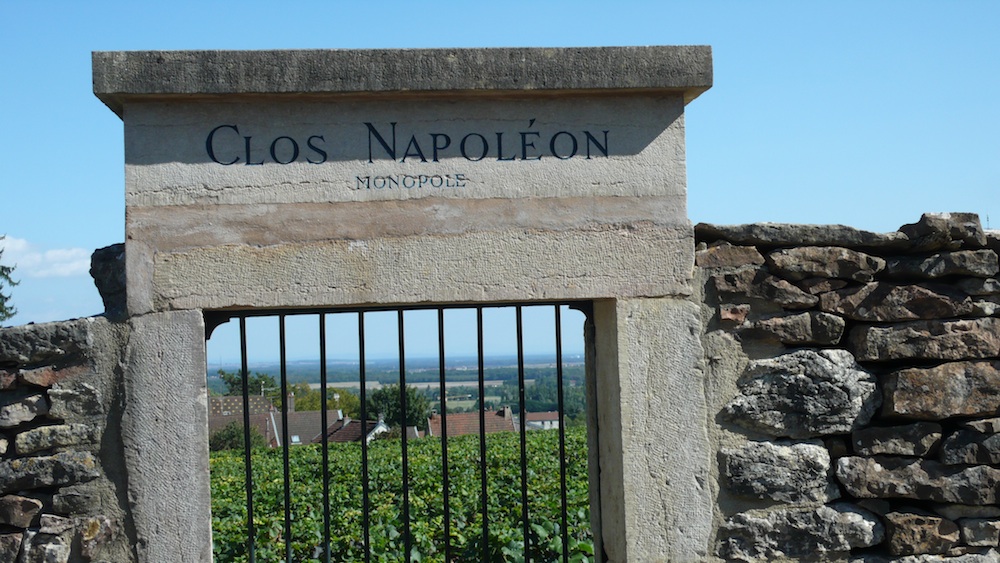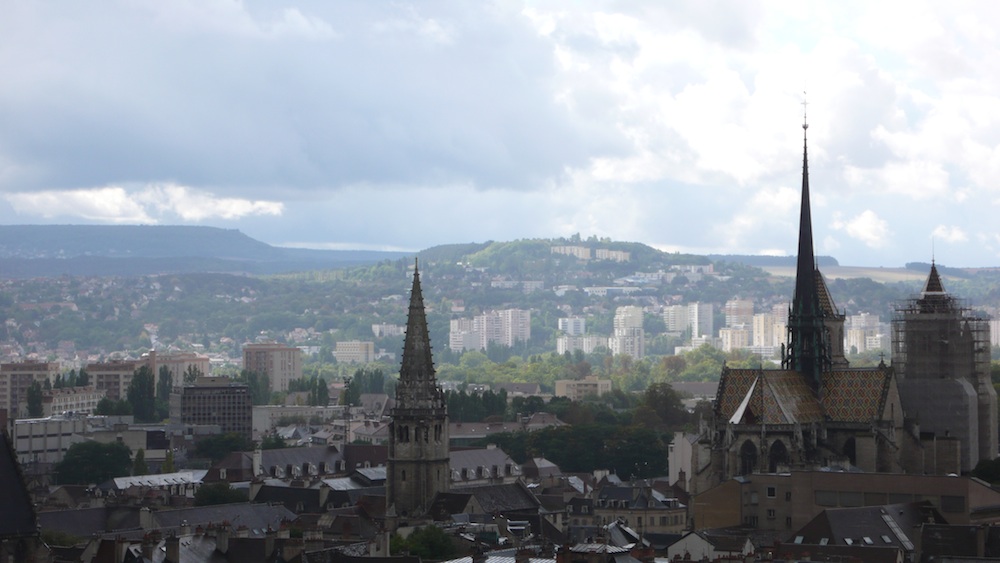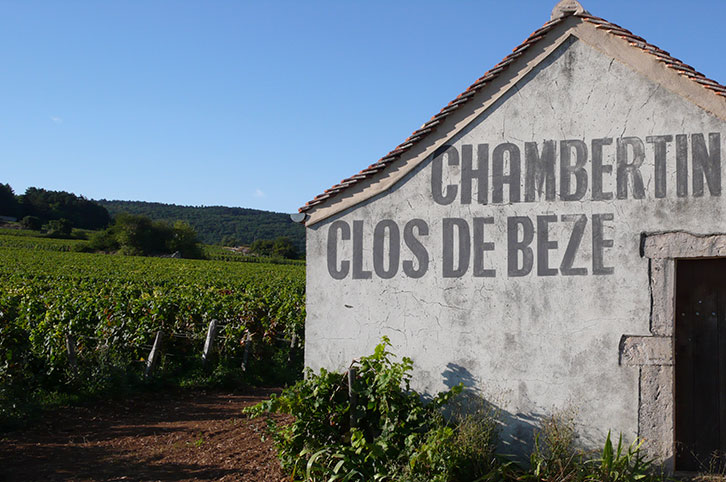 Driving along the “route des Grands Crus,” our guide kept pointing out various esteemed vineyards and winemaking houses – and, whenever we stopped for a photo, admonishing all of us not to taste the grapes or cross the stone walls surrounding the vineyards.
Driving along the “route des Grands Crus,” our guide kept pointing out various esteemed vineyards and winemaking houses – and, whenever we stopped for a photo, admonishing all of us not to taste the grapes or cross the stone walls surrounding the vineyards.
Oh, but how tempting it was: to sneak a bunch of grapes from these illustrious houses – and then to imagine pocketing the grape seeds and planting them in the States. Our own “Grand Crus” grapes in our own backyards!
After all, the “route des Grands Crus” is the “Champs-Élysées” of Burgundy, home to some of France’s most famous labels, including Gevrey-Chambertin, Vosne Romanees, Morey-Saint-Denis, which, in an oenophile’s world, is equivalent to Cartier, Hermes, and Louis Vuitton.
Located approximately twenty miles from Dijon, the Cote de Nuits wine region produces robust and elegant red wines with an intense, fragrant bouquet, most famously made with the Pinot noir grape. The Cote de Nuits region is where monks practiced winemaking for nearly 700 years and today is the headquarters of the prestigious “Chevaliers du Tastevin,” the brotherhood of wine enthusiasts.
And here you thought Dijon was all about mustard. As the gateway to the most prestigious vineyards of Burgundy, Dijon is the capital of the Burgundy region, a city nestled within one of France’s largest protected areas of nearly 250 acres.
A former duchy in the Middle Ages, Dijon was home to the Dukes of Burgundy for more than 400 years, from the 11th to the 15th centuries, and was a city of extraordinary wealth and power and a center of learning and science.
The train from Paris to Dijon covers the nearly 200 miles in approximately ninety minutes, making Dijon a lovely weekend getaway.
Apart from mustard, many people know Dijon for its owl. The small stone sculpture of an owl (or “la chouette” as the locals refer to it), carved into the exterior facade of Dijon’s 13th-century cathedral, Notre Dame, is considered a good luck charm and visitors from around the world touch it – with the left hand only – and make a wish.
A walking tour, called “The Owl’s Trail,” designates 22 places of interest in the city center and is marked by owls imbedded in the cobblestone and pavement of Dijon’s city center.
Our tour along the “route des Grands Crus” ended just as the sun was dipping below the horizon. We passed through the village of Vougeot with its Chateau du Clos de Vougeot, the “Acropolis” of Burgundy wine, and then our guide turned onto a stone drive that was the entrance to the Chateau de Gilly.
The 11th-century abbey (which was home to the monks who built the fabled Chateau du Clos) was renovated in the 17th century and became a chateau-hotel in 1988.
Dijon is also the home of crème de cassis, without which aficionados of Kir Royal would be lost. That evening, while gazing out over the French gardens, we raised our glasses of Kir and toasted to the foresight of the winemaking monks who helped make Dijon the center of oenophilia.
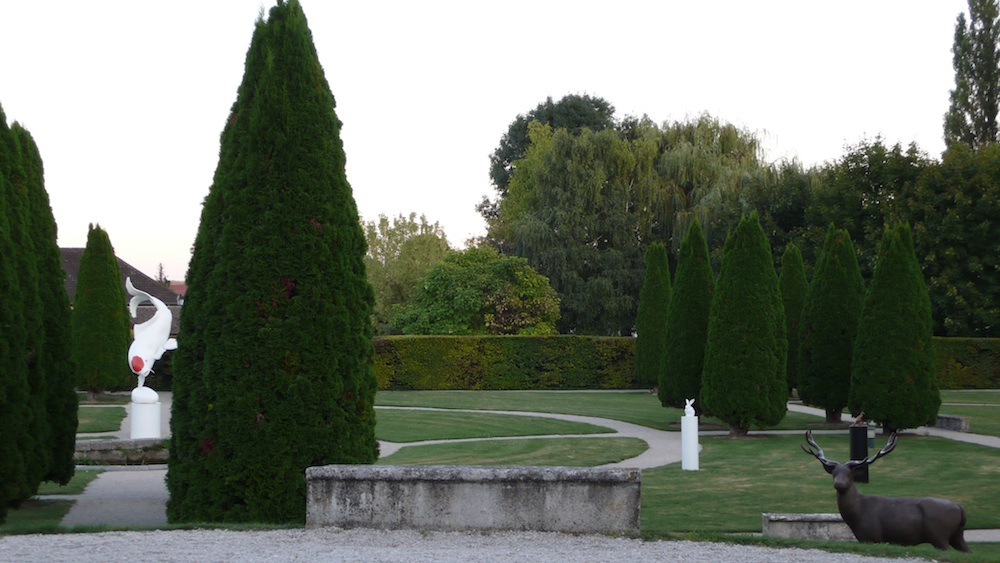
A former duchy in the Middle Ages, Dijon was home to the Dukes of Burgundy for more than 400 years. (Source: MRNY)
WHAT TO DO:
Boutique Maille: The only shop in the city that offers fresh Dijon mustard straight from the pump – and then offers it for sale in corked stoneware ceramic jars, wrapped in copious amounts of paper to insure that the mustard arrives intact and enables you to have a taste of Dijon in your own home.
Founded in 1747 by the official vinegar maker at the royal court of King Louis XV, Maille is the definitive Dijon mustard. Inside the charming (and tourist-laden) boutique on rue de la Liberte, there are no less than eighty varieties, including seasonal mustards and mustards with exotic spices or fruit and in flavors such as goat cheese pear or black truffle and celery root or Armagnac and prunes.
No sandwich will ever taste the same after you slather yours with a Dijon mustard from Maille.
LINK: Boutique Maille
Bourgogne Street: Located in the heart of Dijon’s city center, Bourgogne Street sells regional products from numerous prestigious houses, including homemade biscuits, gingerbread, candies, and other local specialties that will delight all epicures with a fondness for French cuisine.
LINK: Bourgogne Street
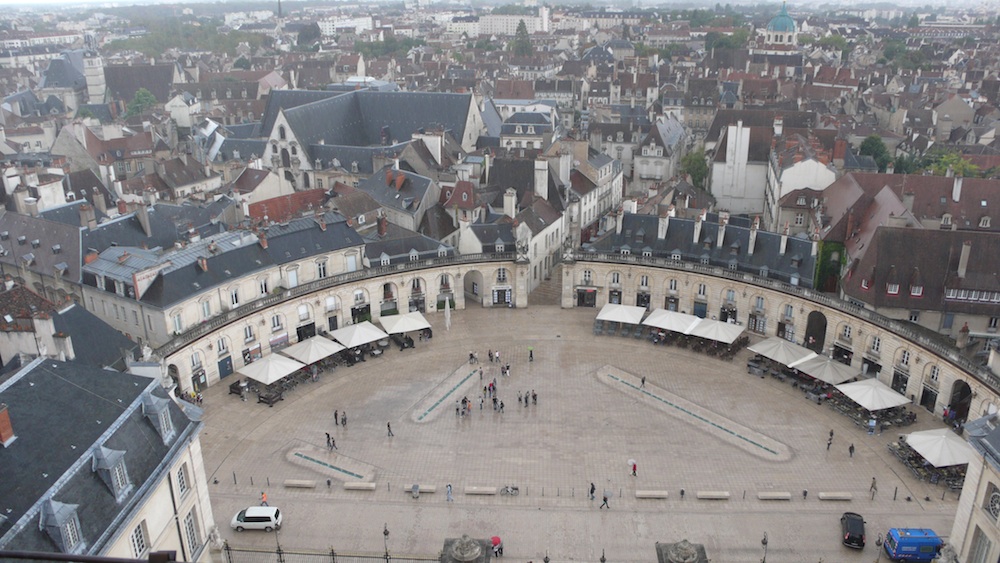
For one of the best perspectives on Dijon, climb the winding staircase of the 15th-century tower that looks out over the city. (Source: MRNY)
Philip the Good’s Tower: For one of the best perspectives on Dijon, climb the winding staircase of the 15th-century tower that looks out over the city. At a height of 150 feet, the tower symbolized the power of the Dukes of Burgundy – and today, it still affords an impressive view. If you squint and hang over the balustrade, you might even see Mont Blanc in the distance.
LINK: Phillip the Good’s Tower
Les Halles Market: Constructed in the 19th century by architects working from the plans of Gustave Eiffel (yes, that one, a native son who was born in Dijon), this splendid covered market is a culinary cornucopia of regional specialties. Surrounded by food stalls, antique vendors, booksellers, and charming restaurants, the neighborhood provides a fascinating insight into Dijon quotidian life.
LINK: Les Halles Market
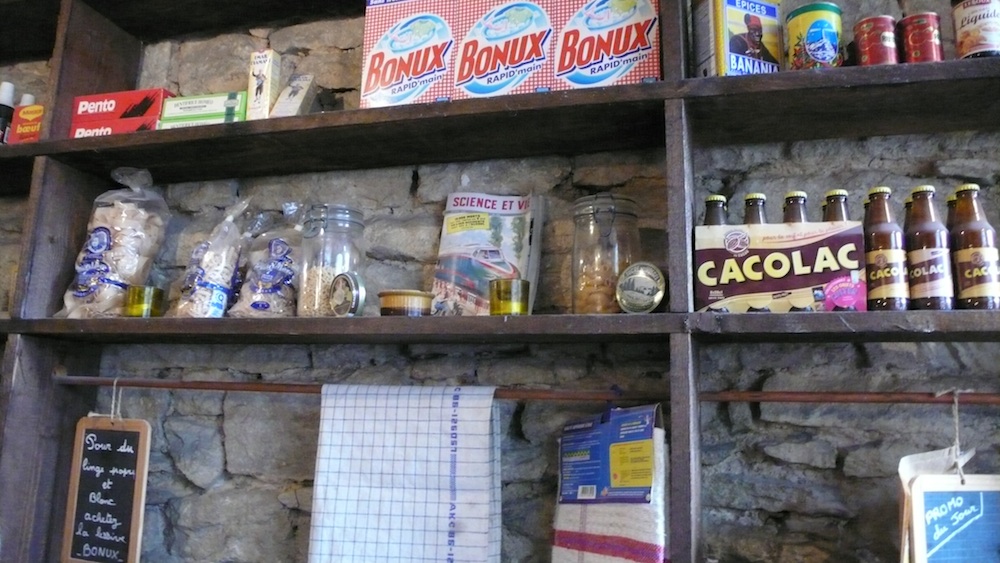
One of the most charming restaurants in Dijon, L’Epicerie & Cie resembles a grocery store cum bistro from post-WWII France. (Source: MRNY)
WHERE TO STAY:
Hostellerie du Chapeau Rouge: Imagine your wealthy dowager aunt’s pied à terre in Paris, which was designed by your aunt’s dearest bachelor pal who also happened to be Halston’s interior designer – and you have a general idea of the time warp chambers at this amiable establishment.
The generously proportioned rooms are studies in chartreuse and puce, sometimes furnished with Philippe Starck ghost chairs and purple paisley upholstered fauteuils.
Bathrooms are particularly expansive with double marble sinks and enough floor space to conduct a yoga class.
The breakfast room features a living tropical wall and Limoges china festooned with palms – and you almost expect Josephine Baker to make an appearance offering you fresh bananas. The buffet is well-stocked, with a delicious fresh fruit salad and eggs with timers, for your own personal boiling preference.
Tucked off the lobby is the Michelin-starred restaurant, William Frachot, which is sort of like the impeccable gentleman on your eccentric aunt’s arm.
The prevailing atmosphere at Hostellerie du Chapeau Rouge is akin to living with Auntie Mame and her adoring, adorable disciples. After two nights, you’ll think about moving in full-time.
LINK: Hostellerie du Chapeau Rouge
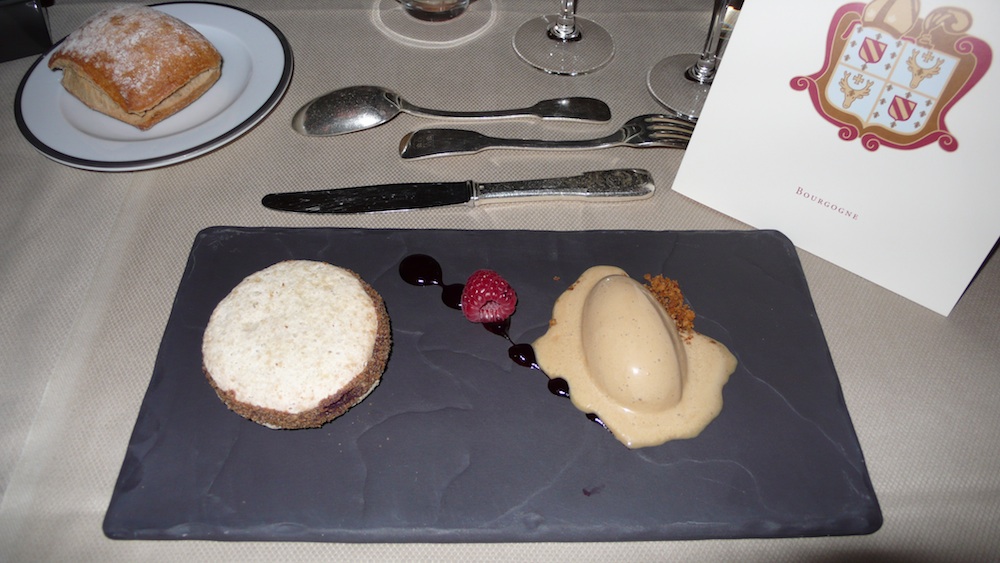
The chef of Clos Prieur, Jean-Alain Poitevin, has been at Chateau de Gilly since 2006 (Source: MRNY)
WHERE TO EAT:
Restaurant William Frachot: One of the region’s most acclaimed and accomplished restaurants, the Michelin-starred William Frachot, is tucked off the lobby of the Hostellerie du Chapeau Rouge, which just happens to be a Best Western hotel and which shows you the difference between the brand in the States and in Europe.
A bon vivant and a global traveler, Chef William Frachot describes his cuisine as “creative contemporary,” which is highlighted by Frachot’s intuitive understanding of French culinary tradition and the knowledge gained from his gastronomic peregrinations.
Frachot’s background includes stints in England and Canada, where, in Montreal, Frachot was the Chef de Cuisine of the celebrated “Les Caprices de Nicolas.” Returning to Dijon in 1999, Frachot completely refurbished his eponymous restaurant in 2008 in order to emphasize the color and textures of various plants and minerals.
A 48-hour braised veal, for example, is enhanced by the addition of tonka beans, while slow-cooked mackerel is accompanied by a broth of razor clams. Langoustines are lightly toasted and paired with Jerusalem artichoke ravioli. Glazed cod is dressed with lemon cream and butter foam.
The menu is guided by the seasons and by Frachot’s imaginative interpretations of Burgundian cuisine. A dessert course highlights chocolate from the Dominican Republic, accompanied by sesame seeds and chocolate sorbet. A strawberry tart with verbena cream showcases the best of summer.
With an extensive wine cellar featuring a broad selection of Grand Crus, Restaurant William Frachot celebrates the best of Burgundy while also toasting to global gastronomy.
LINK: Restaurant William Frachot

What was once the residence of the Abbots of Citeaux between the 14th and 16th centuries is now a member of the Small Luxury Hotels of the World. (Source: MRNY)
Le Clos Prieur at Chateau de Gilly: If you’re a fan of “The Tudors” or “Marie Antoinette” or if you’ve ever yearned to inhabit a chateau, then it’s imperative that you make your way to Chateau de Gilly and dine in the 14th-century Gothic-style vaulted restaurant, Le Clos Prieur.
Located on the “route des Grands Crus,” between Dijon and Beaune, opposite the famous Chateau du Clos de Vougeot, this former Cistercian residence from the 14th century was transformed into a “chateau hotel” in 1988. What was once the residence of the Abbots of Citeaux between the 14th and 16th centuries is now a member of the Small Luxury Hotels of the World with a 6,000-bottle wine cellar. (Lest you’ve forgotten, it was the Cistercian monks who built the acclaimed Chateau du Clos de Vougeot, which is now the home of the Chevaliers du Tastevin.)
The chef of Clos Prieur, Jean-Alain Poitevin, has been at Chateau de Gilly since 2006 and his menu focuses on regional specialties such as duck breast with local honey and roasted peaches, pike perch in crusted gingerbread, Charolais beef, poached eggs in a red wine sauce in the style of “Marie’s grandmother” – and, of course, Burgundy snail tart, with mushroom mousse and sweet garlic cream. Desserts include regional cheeses and a particularly delicious rendition of a local favorite, gingerbread with black currants.
Dining in this ancient wine cellar with its vaulted ceiling, wainscoting, and painted beams, you can’t help but feel as if you’re caught in a delicious time warp, living in the age of Catherine de’Medici.
LINK: Chateau de Gilly
DZ’Envies: Perfectly situated alongside Les Halles, the covered market in Dijon, DZ’Envies is a sleek and stylish (and very popular) restaurant offering fresh, sustainable cuisine. A bag of bread rolls is so delicious that you’re tempted to ask for another. Three-course menus feature local ingredients and every dish is beautifully plated. The relaxed and friendly ambiance suggests a culinary school where every member of the staff is anticipating a long career in hospitality – and with food this delicious, you know they’re all going to be successful.
LINK: DZ’Envies
L’Epicerie & Cie: Imagine the characters in Woody Allen’s “Midnight in Paris” on a day trip to Dijon and stopping here for a late afternoon lunch. One of the most charming restaurants in Dijon, L’Epicerie & Cie resembles a grocery store cum bistro from post-WWII France. It’s not difficult to imagine Hemingway and his pals hanging here drinking Pernod in the afternoon and eating sandwiches slathered with Dijon mustard. The atmosphere is lively and light, with a sense of humor – and the food makes you smile with happiness at being in France.
LINK: L’Epicerie & Cie
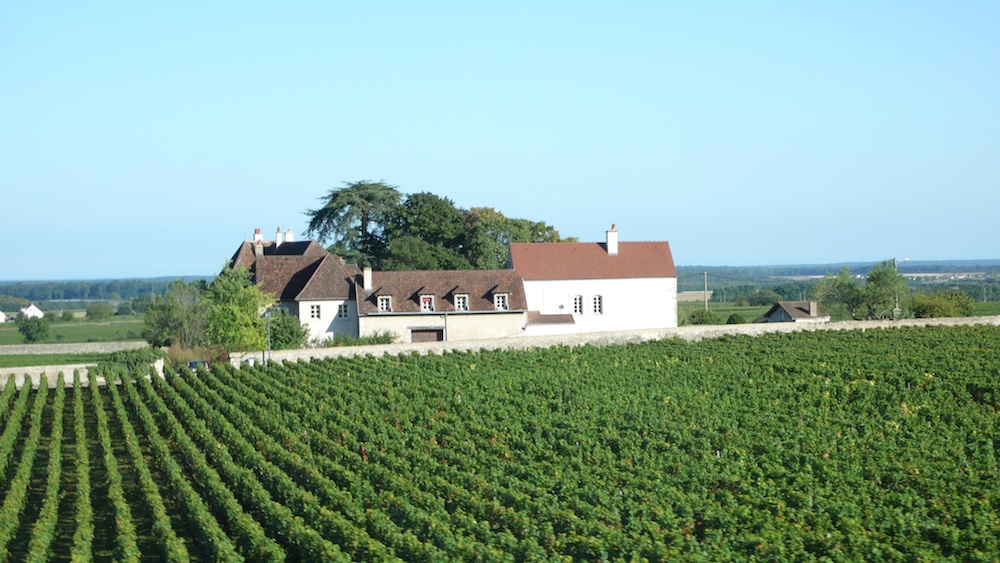
Located approximately twenty miles from Dijon, the Cote de Nuits wine region produces robust and elegant red wines with an intense, fragrant bouquet. (Source: MRNY)
GETTING THERE:
Air France: On Air France, there’s still a middle class – and it is rightfully celebrated.
It’s called Premium Economy, meaning it’s a class above Air France’s economy class – and right behind Air France’s business class.
With Premium Economy, you get many of the same amenities as business class. In Premium Economy, the Air France seats are like your father’s favorite Barcalounger. Meal service in Premium Economy, conceived by Michel Nugues of “Toques du Ciel” (or Sky Chefs), has been designed specifically for this cabin and includes classic French specialties.
As for the price, depending on destination, Premium Economy is approximately 50% less than business class – and sometimes only $400 more than a round-trip economy ticket.
Regardless of which class you choose, Air France is the only airline that offers Champagne to all passengers on its long-haul international flights – at no extra charge.
LINK: Air France Air France Premium Economy
ADDITIONAL INFO:
Click here for MRNY gallery of Dijon, France.
Dijon Tourist Office or Dijon Tourist Office

